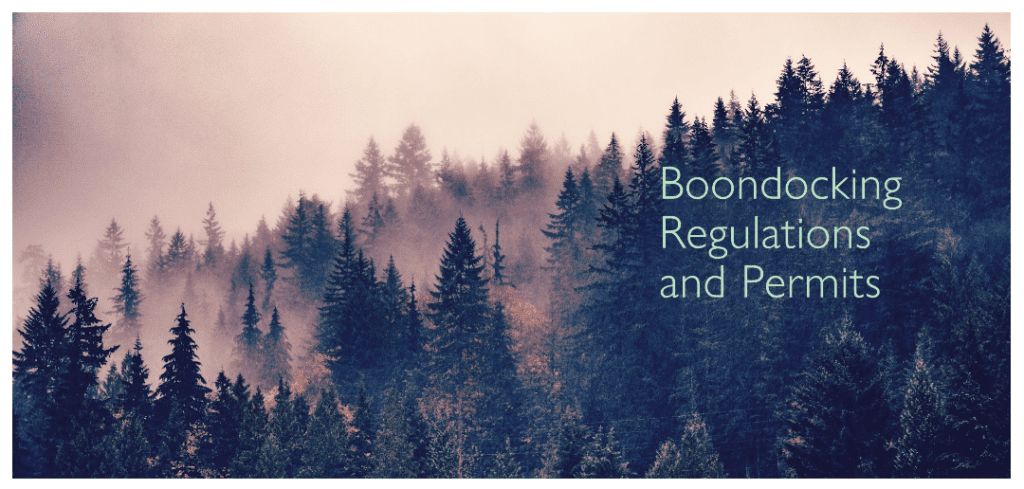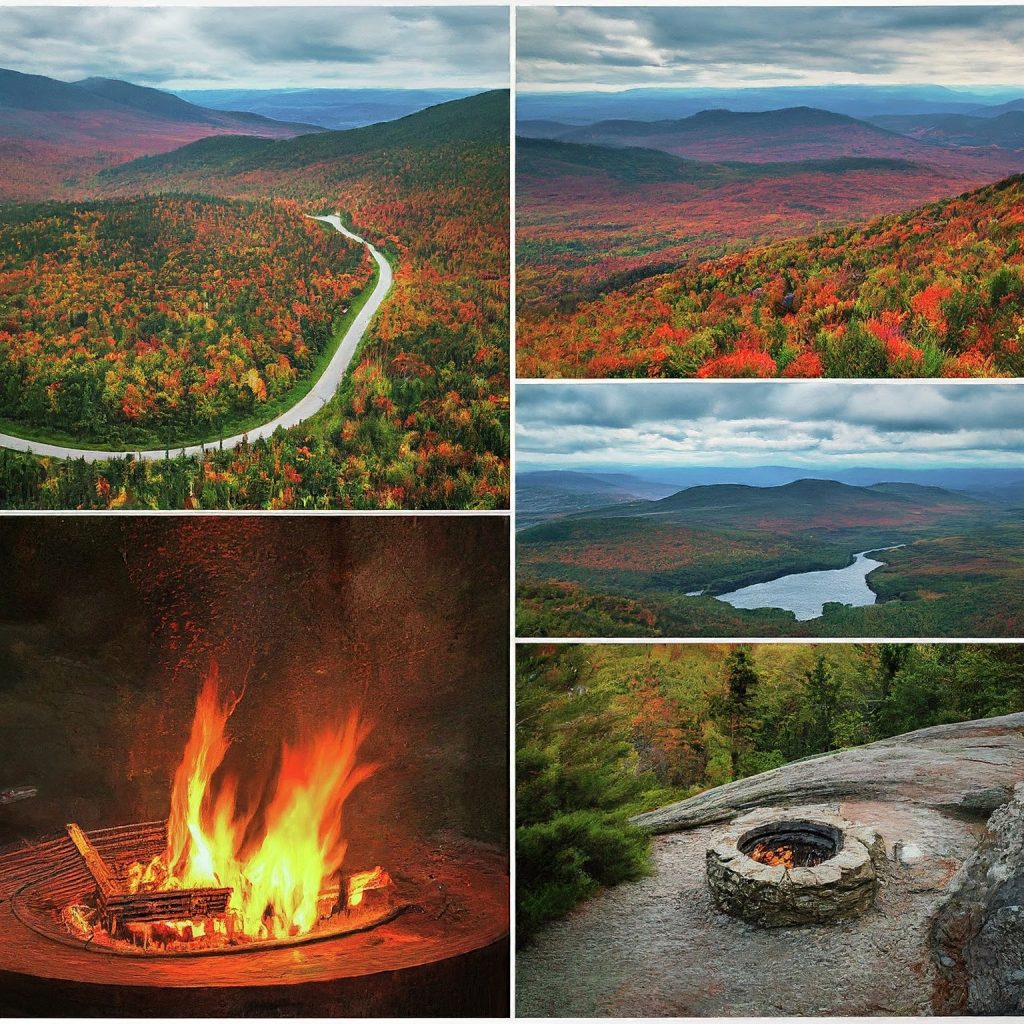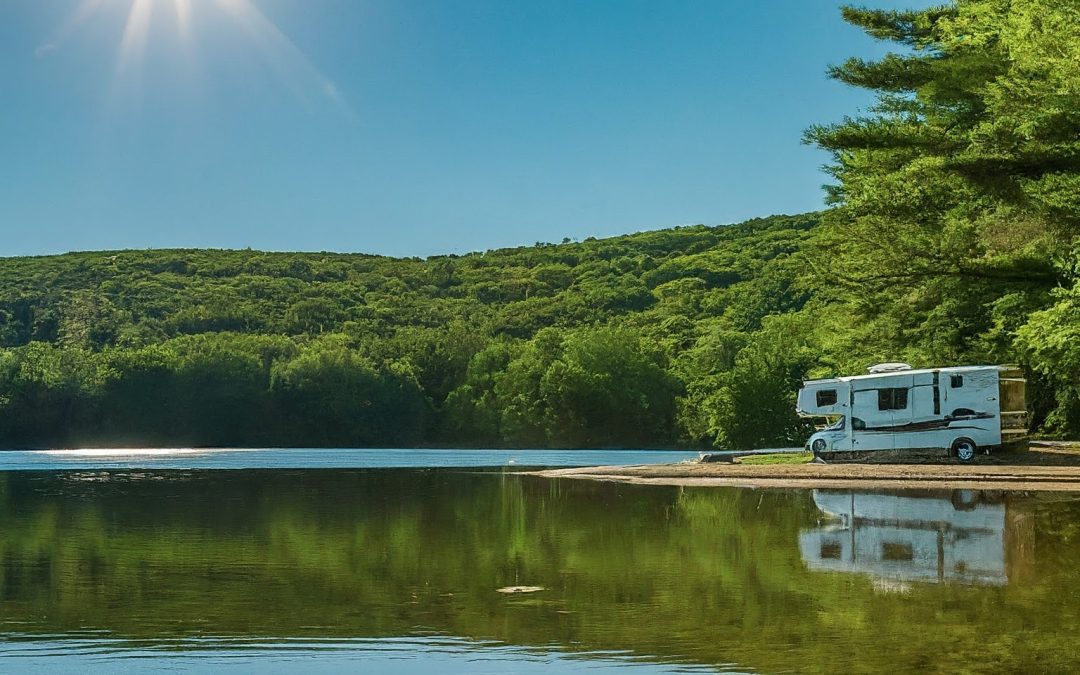A Beginner’s Guide to FREE Camping in New England
New England, with its picturesque landscapes and rich history, offers an ideal backdrop for outdoor enthusiasts eager to explore the concept of boondocking. Whether you’re a seasoned RVer or a novice camper, boondocking—dispersed camping without the amenities of traditional campgrounds—can be a thrilling way to experience the region’s natural beauty. This guide will walk you through everything you need to know to start your boondocking adventure in New England, from understanding the basics to finding the best spots and ensuring a safe, enjoyable trip.
What is Boondocking?
Boondocking, also known as dispersed camping or dry camping, involves setting up camp in remote areas without access to hookups for water, electricity, or sewer. In New England, this often means camping on public lands, in national forests, or on private land with permission. The key appeal of boondocking lies in its simplicity and the chance to camp for free or at a very low cost, all while enjoying a more intimate connection with nature.

Regulations and Permits
Before embarking on your boondocking journey, it’s essential to understand the regulations and permits required to camp on public lands in New England. Each state has its own rules, and it’s crucial to adhere to them to ensure a legal and respectful camping experience.
General Guidelines
- National Forests: In New England, the Green Mountain National Forest in Vermont and the White Mountain National Forest in New Hampshire and Maine offer numerous boondocking opportunities. Generally, you can camp anywhere that’s not explicitly prohibited, but make sure to follow specific guidelines such as distance from trails and water sources. Green Mountain National Forest and White Mountain National Forest websites provide detailed regulations and permit applications.
- State Forests and Parks: Regulations vary by state. For example, in Vermont and Massachusetts, boondocking is allowed in designated state forests. Always check local regulations and obtain necessary permits if required. Vermont Department of Forests, Parks, and Recreation and Massachusetts Department of Conservation and Recreation websites offer up-to-date information and permit applications.
- Private Land: Boondocking on private land is an option if you have the landowner’s permission. Websites like Hipcamp can help you find private properties that welcome boondockers.

Unforgettable Boondocking Adventures in New England
New England’s diverse landscapes offer a treasure trove of boondocking opportunities, from the towering peaks of the White Mountains to the serene lakes and forests of Vermont. Here’s a curated list of some top spots to consider, categorized by state:
Vermont
- Green Mountain National Forest: Embark on a wilderness adventure in this vast forest. Popular spots include Somerset Airfield, a scenic meadow with easy access, and Kelly Stand Road, known for its dispersed camping opportunities nestled amidst towering pines.
- Moosalamoo National Recreation Area: Nestled within the Green Mountain National Forest, this hidden gem boasts stunning hiking trails and tranquil campsites. Relax by a babbling brook or explore the area’s abundant wildlife.
New Hampshire
- White Mountain National Forest: A haven for outdoor enthusiasts, this expansive forest offers countless boondocking possibilities. Cruise down the scenic Kancamagus Highway and discover secluded campsites tucked away amidst the breathtaking scenery.
- Great North Woods: For the truly adventurous, venture north to the Great North Woods. Here, vast stretches of wilderness await, promising solitude, unparalleled stargazing, and the chance to encounter a variety of wildlife.
Maine
- North Maine Woods: Calling all wilderness seekers! This remote region offers pristine boondocking sites perfect for escaping the crowds and immersing yourself in the untouched beauty of Maine.
- Public Reserved Lands: Uncover hidden gems like Bigelow Preserve and Deboullie Public Reserved Land. These areas offer dispersed camping opportunities surrounded by stunning natural landscapes.
Massachusetts
- October Mountain State Forest: The largest state forest in Massachusetts, October Mountain boasts several designated camping areas ideal for boondockers. Hike scenic trails, explore secluded ponds, and enjoy the tranquility of the forest.
- Beartown State Forest: Escape the hustle and bustle at Beartown State Forest. Known for its peaceful campsites nestled amidst wooded landscapes, this area is perfect for those seeking a relaxing boondocking experience.
Connecticut and Rhode Island
While these states have fewer traditional boondocking options, you can still find opportunities for dispersed camping in state forests like Pachaug State Forest in Connecticut. Alternatively, consider state park campgrounds with basic amenities like bathrooms and showers, offering a more accessible introduction to dispersed camping. Connecticut State Parks and Forests and Rhode Island State Parks websites provide information on camping options.
Essential Gear and Practices for a Memorable Boondocking Experience
Boondocking offers a unique way to connect with nature, but venturing into remote areas requires careful preparation and responsible camping practices. Here are some essential tips to ensure a safe, enjoyable, and low-impact adventure:
Be Self-Sufficient
- Water Supply: Pack enough water for your entire trip, considering drinking, cooking, and cleaning needs. Portable water filters are highly recommended for extended stays or areas with questionable water sources.
- Power: Solar panels or a portable generator can provide electricity for essential appliances. Don’t forget extra batteries and chargers for your devices.
Leave No Trace
- Waste Management: Pack out all trash, leftover food, and hygiene products. Utilize portable toilets if necessary and dispose of waste properly at designated stations.
- Minimize Campfire Impact: Opt for camp stoves whenever possible to minimize your environmental footprint. If you do have a fire, use established fire rings, keep it small, and ensure it’s fully extinguished before leaving the campsite.
Safety and Navigation
- Navigation: Reliable GPS devices and detailed maps are crucial, especially in remote areas with limited cell service. Consider downloading offline maps for added peace of mind.
- Safety Equipment: A well-stocked first-aid kit, fire extinguisher, and basic tools for vehicle repair are essential for unexpected situations.
Plan and Prepare
- Stay Informed: Check the weather forecast and fire restrictions before your trip. Be prepared for changing weather conditions, especially in mountainous regions.
- Communicate Your Plans: Let someone know your itinerary, including your planned destinations and expected return date, in case of emergencies.
- Wildlife Awareness: Research local wildlife and proper food storage techniques to avoid attracting unwanted critters.
Respect for Others and the Environment
- Be Considerate: Keep noise levels down, respect other campers’ privacy, and yield to others on trails to ensure a peaceful experience for everyone.
By following these essential tips, you can ensure a safe, enjoyable, and responsible boondocking experience that minimizes your impact on the natural environment.
Advanced Boondocking Tips
For those with some boondocking experience, here are a few advanced tips to enhance your adventures:
- Extended Stays: Plan for longer trips by identifying water refill and dump stations along your route. Websites like Campendium can help you find these resources.
- Solar Power Optimization: Invest in a high-quality solar setup tailored to your energy needs. This can include larger panels, efficient charge controllers, and high-capacity batteries.
- Connectivity: Boost your cell signal with a mobile signal booster to stay connected even in remote areas. This is especially useful for digital nomads.
- Cold Weather Camping: Equip your RV with proper insulation, heated tanks, and a reliable heating system. Carry extra propane and winterize your water system to prevent freezing.
Challenges of Winter Boondocking in New England
Winter boondocking in New England can be a unique and rewarding experience, but it comes with its own set of challenges. Here are some tips to tackle cold weather camping:
- Insulation: Make sure your RV is well-insulated. Use window coverings, foam board, and RV skirting to retain heat.
- Heating: A reliable heat source is crucial. Consider portable propane heaters as a backup to your RV’s furnace.
- Water System: Winterize your water system to prevent pipes from freezing. Use heated hoses and tank heaters, and keep a supply of bottled water on hand.
- Safety: Be prepared for snow and ice. Carry snow chains, a shovel, and sand or cat litter for traction. Check weather forecasts regularly and have an emergency plan.
Conclusion
Boondocking in New England offers a unique opportunity to immerse yourself in the region’s natural beauty while enjoying the freedom and adventure of dispersed camping. By understanding the regulations, choosing the right locations, and following best practices for safety and environmental stewardship, you can ensure a memorable and responsible boondocking experience. So pack your gear, plan your route, and get ready to explore the wild and wonderful landscapes of New England. Happy camping!

